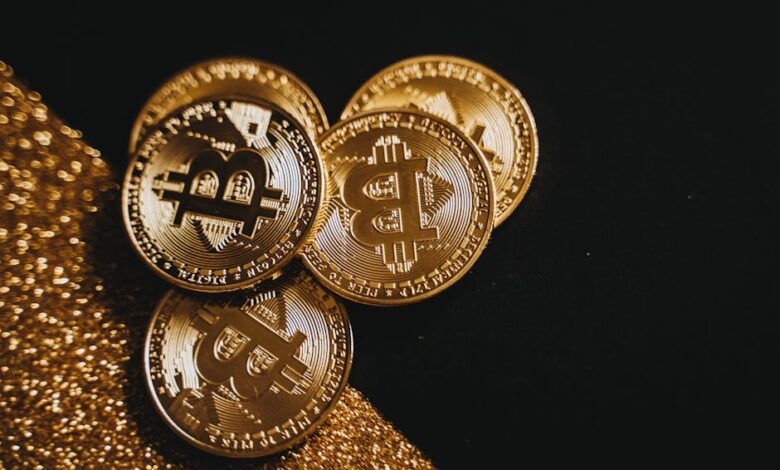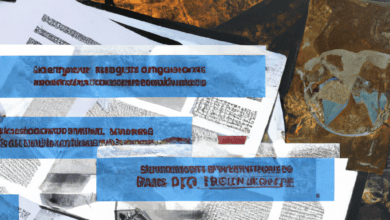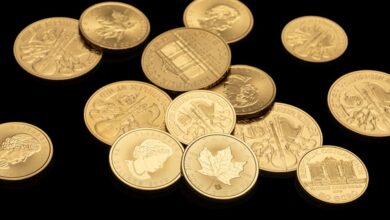Metals in Motion: Analyzing Market Trends, Investment Opportunities, and Economic Indicators

In an increasingly interconnected global economy, the dynamics of metal markets are more critical than ever, influencing both industrial applications and investment strategies. This article delves into the multifaceted roles of various metals, beginning with silver, which serves as both an essential industrial resource and a sought-after investment asset. We will explore how copper prices can reflect broader economic health, acting as a barometer for global market trends. Additionally, the rise of green energy technologies has led to a surge in demand for rare earth metals, reshaping the landscape of resource allocation and investment opportunities.
As we navigate these themes, we will also compare platinum and palladium as investment options, assess the significance of metals in diversifying portfolios, and examine the effects of inflation on the prices of both precious and industrial metals. Furthermore, we will discuss aluminum's future role in a sustainable economy and consider how mining regulations impact metal prices. By understanding these factors, investors and industry stakeholders can better position themselves in the ever-evolving metal markets. Join us as we unpack the complexities and opportunities within this vital sector.
- 1. **Navigating the Metal Markets: Silver’s Dual Role in Industry and Investment**
- 2. **Economic Indicators: Understanding Copper Prices as a Barometer for Global Health**
1. **Navigating the Metal Markets: Silver’s Dual Role in Industry and Investment**
Silver plays a multifaceted role in both industrial applications and investment markets, making it a unique metal with diverse implications for investors and industries alike. As an industrial metal, silver is utilized in a variety of sectors, including electronics, photovoltaics, and medical applications. Its exceptional electrical conductivity and antibacterial properties make it indispensable in the production of solar panels, circuit boards, and medical devices. Consequently, the demand for silver in these industries is influenced by technological advancements and shifts in consumer preferences, reflecting broader trends in the economy.
In contrast, silver also serves as a popular investment asset, often regarded as a safe haven during times of economic uncertainty. Investors flock to silver as a hedge against inflation and currency devaluation, similar to gold. The dynamics of silver prices in the investment market are shaped by various factors, including geopolitical tensions, market speculation, and changes in central bank policies. Unlike gold, silver's dual nature means that its price can be influenced by both industrial demand and investment sentiment, leading to more volatility.
The interplay between these two roles creates a complex landscape for investors. A surge in industrial demand can drive prices up, benefiting those invested in the metal. However, economic downturns can lead to decreased industrial consumption, causing price fluctuations that investors must navigate carefully. Understanding this dual role is essential for making informed investment decisions and capitalizing on opportunities within the metal markets. As silver continues to play a critical role in both industry and investment, its significance is likely to grow, particularly as global economic conditions evolve and new technologies emerge.
Silver plays a multifaceted role in both industrial and investment markets, serving as a critical component in various applications while also being regarded as a valuable asset for investors. In the industrial sector, silver is prized for its high conductivity, thermal properties, and anti-bacterial qualities, making it essential in electronics, solar panels, and medical devices. As industries increasingly adopt innovative technologies, the demand for silver in these applications continues to rise, contributing to its price movements.
In the investment landscape, silver is often viewed as a safe-haven asset, similar to gold. Investors turn to silver during times of economic uncertainty or inflation, as it is perceived as a store of value. However, unlike gold, silver has a dual role; its industrial demand can influence its market dynamics significantly. This duality means that fluctuations in industrial output and technological advancements can lead to substantial changes in silver's price, reflecting broader economic health.
Copper prices serve as another barometer of global economic health, often referred to as "Dr. Copper" due to its ability to indicate growth trends. As a fundamental metal in construction, electrical wiring, and various manufacturing processes, copper demand closely tracks economic activity. Rising prices typically signal increased demand, suggesting robust economic growth, while declining prices may indicate a slowdown. Factors such as infrastructure spending, industrial production, and global trade flows play crucial roles in shaping copper price trends.
The transition to green energy technologies has further amplified the demand for rare earth metals, essential for the production of batteries, electric vehicles, and renewable energy systems. As nations pivot towards sustainable energy solutions, the need for these metals is projected to escalate, potentially leading to supply constraints and price volatility. This shift underscores the importance of securing stable supply chains and investing in sustainable mining practices.
When comparing platinum and palladium, two precious metals often used in automotive catalytic converters, the choice of investment can hinge on market dynamics and future demand. Platinum, traditionally more expensive, has seen fluctuating interest due to its industrial applications and jewelry market, while palladium has surged in popularity due to stricter emissions regulations and its role in gasoline engines. Investors must consider market trends, technological shifts, and geopolitical factors when assessing which metal offers better investment potential.
Metals also play a crucial role in diversifying investment portfolios. Investors often include a mix of precious and industrial metals to hedge against inflation and economic volatility. As inflation rises, the prices of both precious and industrial metals tend to increase, making them attractive options for risk management. Understanding the intricate relationships between these metals and broader economic indicators is vital for making informed investment decisions.
Looking ahead, aluminum is poised to play a significant role in a sustainable economy. With its lightweight properties and recyclability, aluminum is increasingly favored in the automotive and packaging industries, contributing to energy efficiency and reduced carbon footprints. The future demand for aluminum will likely be influenced by advancements in recycling technologies and innovations in product designs that prioritize sustainability.
Finally, mining regulations significantly impact metal prices. Stricter environmental and labor regulations can increase production costs and limit supply, leading to higher prices. Conversely, favorable regulatory environments can stimulate production and lower costs, affecting market dynamics. As countries grapple with balancing economic growth and environmental sustainability, the interplay between regulation and metal prices will remain a critical factor in the industry.
2. **Economic Indicators: Understanding Copper Prices as a Barometer for Global Health**
Copper prices have long been regarded as a reliable indicator of global economic health, often referred to as "Dr. Copper" due to its ability to predict economic trends. As a key industrial metal, copper is essential in various sectors, including construction, electronics, and transportation. Its widespread use means that fluctuations in copper prices can reflect changes in demand across these industries, which are closely tied to economic activity.
When economies are growing, demand for copper typically increases as construction projects ramp up and manufacturing output rises. This heightened demand often drives prices higher, signaling robust economic conditions. Conversely, when economic growth slows or contracts, demand for copper diminishes, leading to price declines. As such, investors and analysts closely monitor copper price movements as a barometer for broader economic trends.
Additionally, copper prices can be influenced by supply-side factors, such as mining production levels and geopolitical stability in major copper-producing countries. For instance, labor strikes, environmental regulations, or political unrest in countries like Chile or Peru can disrupt supply, causing prices to spike even in the absence of increased demand. This interplay between supply and demand dynamics further underscores copper's role as an economic indicator.
Moreover, the copper market is increasingly affected by global initiatives aimed at sustainability and green energy. The transition to electric vehicles, renewable energy sources, and smart grid technology is anticipated to drive demand for copper significantly in the coming years. As economies shift towards greener alternatives, monitoring copper prices will provide insights into the pace of this transition and its implications for global economic health.
In summary, copper prices serve as a vital economic indicator, reflecting the state of global industrial demand and economic activity. Understanding these price movements can offer valuable insights for investors, policymakers, and analysts looking to gauge the health of the global economy.
In conclusion, the dynamics of the metal markets reveal a complex interplay between industrial demand, investment strategies, and broader economic trends. Silver’s unique position as both a critical industrial resource and a popular investment asset underscores its versatility and importance in today's economy. Similarly, copper prices serve as a vital indicator of global economic health, reflecting trends that can influence both market sentiment and investment decisions. The rising demand for rare earth metals, driven by advancements in green energy technologies, further emphasizes the shifting landscape of metal usage and investment.
As we weigh the options between platinum and palladium, it becomes evident that each metal has its own merits and risks, requiring investors to carefully consider their goals and market conditions. Additionally, incorporating metals into investment portfolios can provide diversification benefits, but investors must remain vigilant about the impacts of inflation and mining regulations, which can significantly influence metal prices.
Looking ahead, the future of aluminum appears promising within a sustainable economy, highlighting the need for innovative practices in both production and recycling. As we navigate these multifaceted issues, understanding the intricate relationships among various metals will be essential for making informed investment choices and responding to the evolving demands of our industrial landscape. By staying informed and adaptable, investors can better position themselves to harness the potential of the metal markets in a rapidly changing world.





